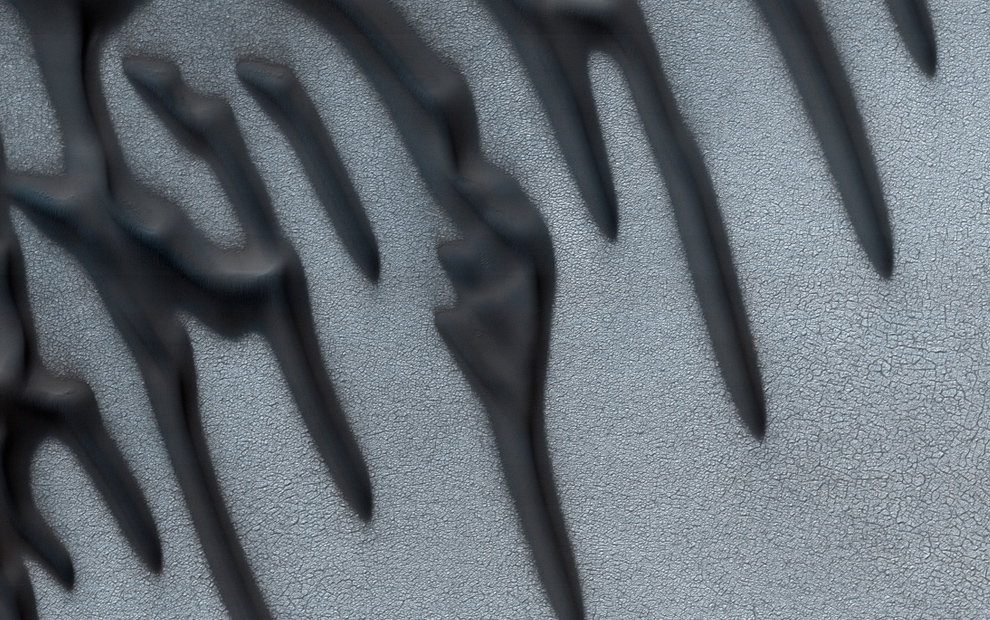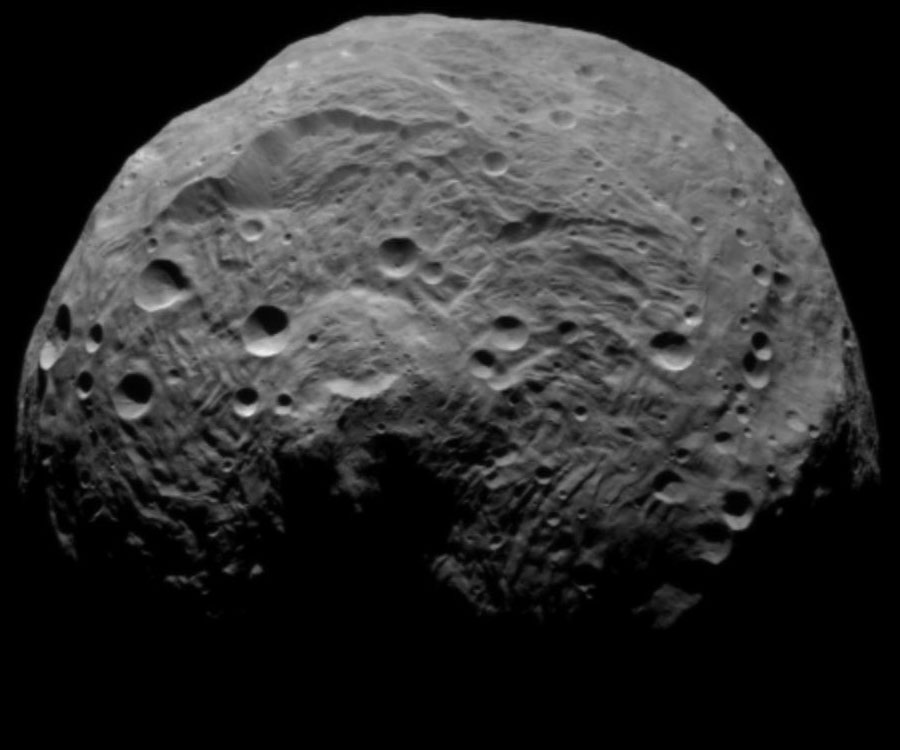Post contributed by Meven Philippe, Ph.D student, Laboratoire de Planétologie et Géodynamique de Nantes, CNRS/Université de Nantes, France.
On Earth, sharp drops of temperature below 0°C can cause the ground to contract and fracture, forming thermal-contraction cracks. These cracks can connect in a network, which leads to a ground that shows a polygonal pattern. Ice or sand can then seasonally aggrade as wedges into these cracks, which uplifts polygons’ margins to higher elevations than their centres, thus forming low-centered polygons. When the infilling material degrades, the elevation of the margins reduces with respect to that of the centre, thus forming high-centered polygons. The same processes are assumed to occur on Mars in the mid-latitudes. Image 1 (42.9°N, 115.43°E) is located in Utopia Planitia, a lowlands plains area in the martian Northern hemisphere where numerous potential periglacial morphologies have been described.

Image 1: Polygonal patterned ground in a crater in Utopia Planitia, Mars. The blue circle highlights examples of low-centred polygons, the red circle highlights examples of high-centred polygons. The black arrow points out the sharp border between the polygonised unit and another one, non-polygonised. Illumination is from the left. Credits: HiRISE image ESP_036366_2235 – NASA/JPL/University of Arizona.
(more…)








